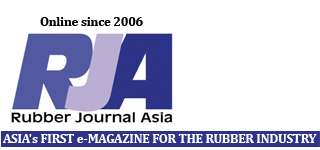Cambodia’s rubber rush burned out quickly. High world rubber prices in 2011 encouraged investors to clear thousands of hectares for rubber plantations, but the price of natural rubber plummeted the following year and has bottomed out at around US$2,000 per ton – about a third that of historic 2011 highs. The market has also suffered because the country exports only raw latex resin and dry rubber – not value-added finished products such as tires and flip flops.
Market analysts say that Cambodian rubber companies need to start exporting consumer products in order to reach their full potential, but the country’s relatively small rubber supply, combined with high energy and logistics costs, have prevented the industry from moving up the value chain.
“I don’t see any finished-product factories in Cambodia,” said Men Sopheak, secretary-general of the Association for Rubber Development in Cambodia (ARDC).
He said high energy costs in Cambodia have scared off investors. Cambodian gas prices are typically 10 percent higher than Vietnam, and commercial electricity tariffs, at roughly US$0.11 per kWh, are the highest in the Asean region.
The process of making rubber – from removing water to vulcanizing the raw latex – requires a great deal of energy.
Just a Drop in the Bucket
Mr. Sopheak added that a low supply of rubber has also deterred companies from choosing Cambodia over its more rubber-rich neighbors Thailand and Vietnam.
“At this stage, the supply of the raw material is not enough for any finished-product plants to invest in Cambodia,” he told Khmer Times.
Cambodia has cultivated rubber trees on an area of about 330,000 hectares, compared to 2 million hectares in Thailand and nearly 1 million hectares in Vietnam. Yet only about 60,000 hectares of Cambodia’s rubber plantations contain trees mature enough to yield latex.
Rubber trees take about six years to mature – so many trees planted during the rubber boom in 2011 have yet to be tapped.
Indeed, much of the roughly 1.2 million hectares awarded by the government to private corporations as economic land concessions (ELCs) for growing rubber has been clear-cut, but is lying fallow as investors wait for world prices to bounce back to 2011 levels. Not only is the land unused, but plantation owners are hoarding their raw rubber stocks, according to Mr. Sopheak.
“Owners don’t want to sell their raw material,” he said. “so processors face difficulties, and some have suspended operations.”
Analysts say if factories were in place to manufacture finished products from rubber, some of this wasted stock could go to use toward producing value-added goods, putting cleared land to use while employing locals and helping plantation owners recoup their losses. A rubber manufacturing industry for finished goods would also enable plantation owners to increase revenue without slashing more of Cambodia’s forests to grow and sell low-value raw rubber.
Chea Sayim, president of Memot Family Rubber Development, said investors unable to secure the needed economies of scale have shown little interest in setting up factories in Cambodia to produce finished rubber goods.
“Our production currently cannot meet the global demand for high-quantity goods,” he said, “so most of the [manufacturers] go to Vietnam or Thailand.”
Costly Logistics
Even if rubber goods are manufactured in Cambodia, the comparatively high cost of getting them out of the country to foreign markets poses a problem for businesses.
“For investors to come there needs to be better infrastructure,” said Fadzil Rahman, an economist at the Bangkok-based International Rubber Consortium. “Land transport from Cambodia to consuming countries such as China is not well-developed yet.”
Mr. Sopheak of the ARDC said his association is seeking out possible investors to manufacture finished goods in the country.
“There are no promising deals yet, but we are approaching investors,” he said. – khmertimeskh.com

